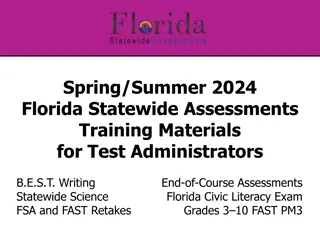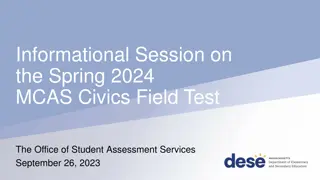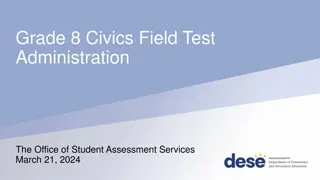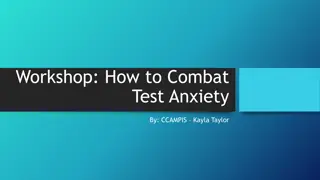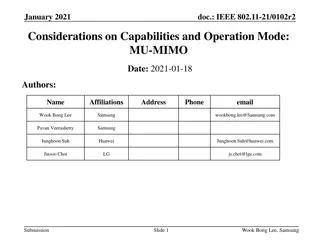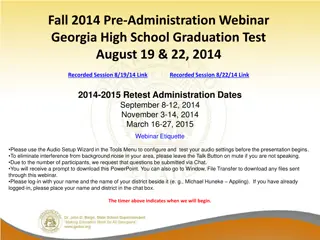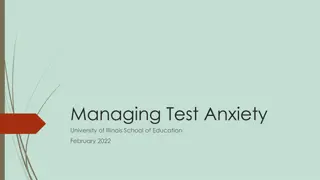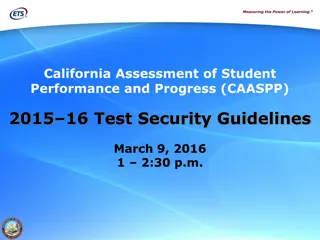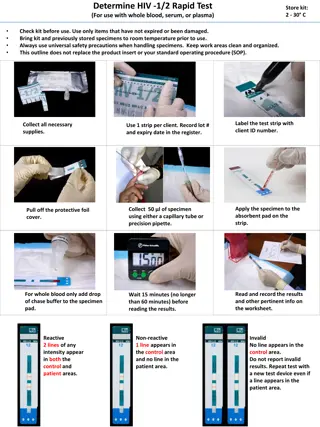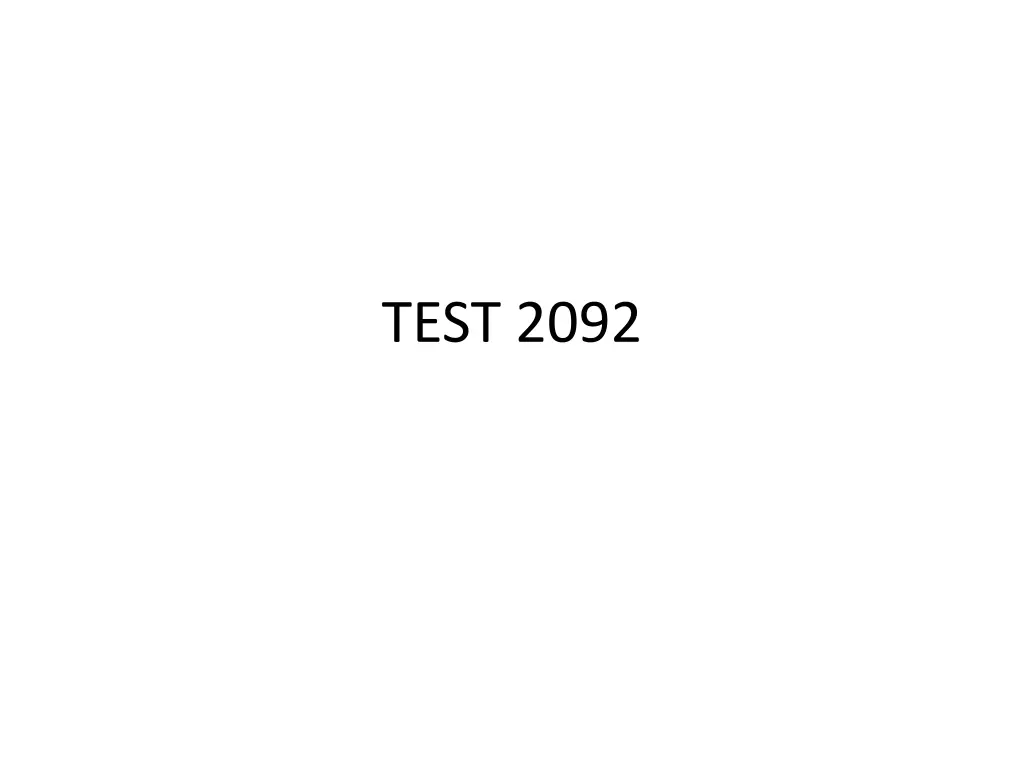
Naval Knowledge Quiz: Test your Understanding of Navy Operations
Test your naval knowledge with questions ranging from Navy publications to earth science and warfare tactics. Explore topics such as tides, submarine warfare, and energy generation from tidal sources. Challenge yourself and learn more about various aspects of naval operations.
Download Presentation

Please find below an Image/Link to download the presentation.
The content on the website is provided AS IS for your information and personal use only. It may not be sold, licensed, or shared on other websites without obtaining consent from the author. If you encounter any issues during the download, it is possible that the publisher has removed the file from their server.
You are allowed to download the files provided on this website for personal or commercial use, subject to the condition that they are used lawfully. All files are the property of their respective owners.
The content on the website is provided AS IS for your information and personal use only. It may not be sold, licensed, or shared on other websites without obtaining consent from the author.
E N D
Presentation Transcript
1. What is the name of the Navy publication in which selected articles, planned events, and important notes are posted daily throughout the command? A) Plan of the Day B) Command Newsletter C) Ship s Organization and Regulations Manual D) Navy Regulations
2. The rough outer crust of the Earth which rides on the molten rock of the upper part of the mantle is called the: A) lithosphere B) outer core C) core D) asthenosphere
3. Halfway between the new and full moon, when the forces of the sun and moon are opposed, there is less difference between low and high tides. These tides are called: A) ebb tides B) spring tides C) flow tides D) neap tides
4. During what type of warfare are the following tools used: radio sonobuoys, magnetic anomaly detection gear, dipping sonar, infrared detection, and towed arrays? A) Amphibious B) Undersea C) Information D) Submarine
5. Tidal energy can be used to generate electricity by A) using water pressure changes during tides. B) using tidal motion to turn turbines. C) using chemicals in tidal water. D) using temperature changes during tides.
6. What term is used to refer to exercise in which adequate amounts of oxygen are not being delivered to the muscles? A) Isokinetic B) Anaerobic C) Aerobic D) Isometric
7. The speed of missiles and other high speed aircrafte is often expressed in terms of __________. A) Mach number B) Mph C) Velocity D) Speed
8. If a diplomat repeatedly breaks laws of a host country, the host government may declare him or her __________ and demand his or her removal. A) Persona none grater B) Persona nona grate C) Persona non grata D) Persona nona greta
9. To provide continuity throughout each duty day, most ships have an appointed senior officer to act as the _____________ each day when the ship is in port. A) Command Duty Officer B) Boatswain s Mate of the Watch C) Officer of the Deck D) Quartermaster of the Watch
10. What man became the first President of Russia after the fall of the Soviet Union? A) Boris Yeltsin B) Mikhail Gorbachev C) Joseph Stalin D) Nikita Krushchev
11. The captain of USS Shreveport is underway and receives a forecast of increasingly poor weather in his area of operations. What should he do to make his ship more stable? A) Decrease ballast B) Add weight topside C) Increase the number of personnel on watch. D) Add ballast.
12. Missiles and aircraft use __________ to maintain their flight paths. A) Energy forces B) Gravity forces C) Drag forces D) Aerodynamic forces
13. Operation Torch was the code word for the planned invasion of: A) Anzio, Italy B) French North Africa C) Sicily D) Salerno, Italy
14. The nuclear-powered Fleet Ballistic Missile Submarines have what primary mission? A) Deterrence of hostilities from any nation. B) Air, surface, and undersea reconnaissance C) Location and destruction of enemy submarines D) Escort support of surface-action groups
15. What term defines a situation in which collision is imminent? A) Immediate B) In extremis C) Catastrophic D) Pressing
16. What is the best term for a tornado that forms over water? A) Stormspout B) Waterspout C) Tornado D) Dust devil
17. If you want to lose weight, the number of calories you consume each day must __________. A) be derived from complex carbohydrates and proteins B) be counterbalanced by calories used in aerobic exercise C) be fewer than the number your body needs D) be at least equal to the number that your body needs
18. What term is used to refer to the art of influencing and directing people in order to accomplish a mission? A) Management B) Supervision C) Leadership D) Guidance
19. According to Thomas Anthony Harris 1969 book, which of these attitudes reflects the approval both of oneself and of others that a healthy, well-adjusted person feels? A) I m OK, you re not OK B) I m OK, you re OK C) I m not OK, you re OK D) I m not OK, you re not OK
20. What is defined as significant activities conducted by naval forces at sea or as day-to-day activities within the operations of a ship? A) Naval operations B) Unified Command C) Information warfare D) Specified command
21. What command is given to push smartly down on and release the grip of the sword so that the sword slides all the way into the scabbard? A) RETURN B) REST SWORD C) ORDER SWORD D) SWORD
22. Navigational _________ are moored, floating markers placed to guide ships and boats safely along channels and in and out of ports. They also warn vessels away from hidden dangers and lead to anchorage areas. A) Light towers B) Light houses C) Buoys D) Daybeacons
23. To halt the squad facing the original direction of march the command is: A) To The REAR, HALT B) Right Oblique HALT C) HALT D) Platoon, HALT
24. A __________ is worn on the Aptitude award ribbon if the cadet is on both the Academic team and the school Honor roll. A) silver star B) gold torch C) lamp D) anchor
25. Which planet was discovered by astronomers trying to learn why Uranus did not always travel its regular orbit? A) Saturn B) Neptune C) Jupiter D) Pluto


